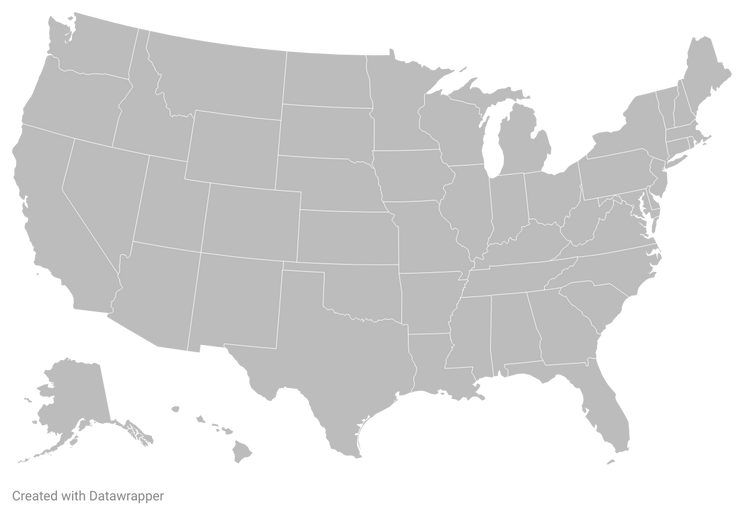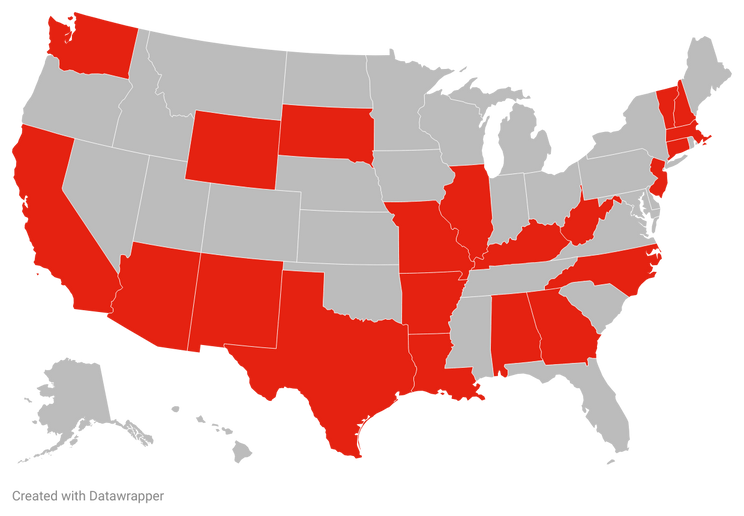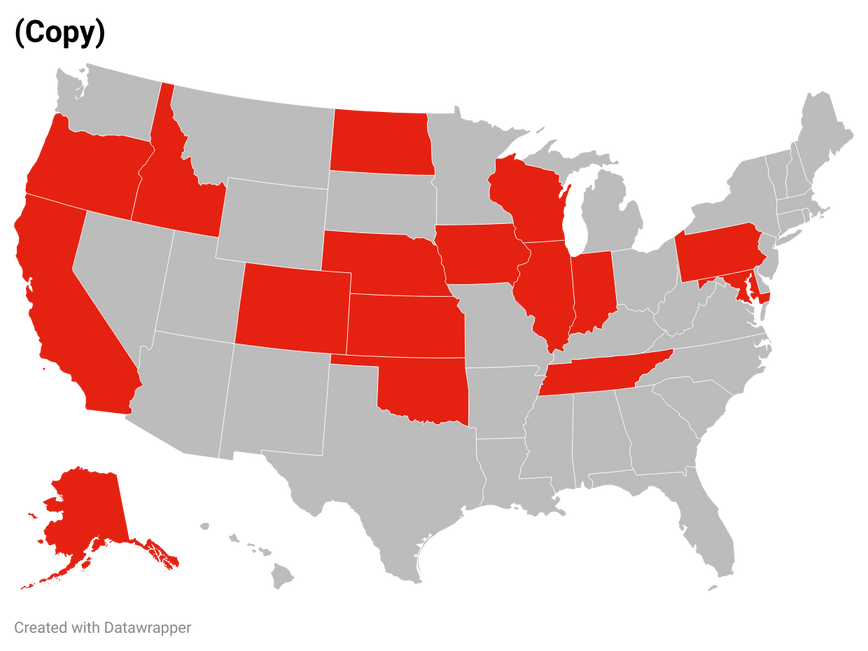The Landscape of Immigration in America
A look at the ever-changing landscape of immigration policy in America
By: Rosario Molina
July 23, 2024
2000

2017

Change in the number of states who require e-verify for some or all job positions between 2000 and 2017
How much do you really know about immigration policy in America?
With over 46 million immigrants* living in the United States, immigration policies likely impact somebody you know.
Most migration policies fall into 3 main categories:
Benefit Policies
Benefit policies are any policies related to access to public benefits within a state - they can ensure or deny access
Integration Policies
Integration policies are policies related to the intentional integration or exclusion of migrants within a state
Enforcement Policies
Policies related to the enforcement of laws, whether mandating laws are enforced or refusal to comply
Total Number of Policies Enacted by Year
*Moslimani, M. and Patel, J.S. (2024) What the data says about immigrants in the U.S., Pew Research Center. Available at: https://www.pewresearch.org/short-reads/2024/07/22/key-findings-about-us-immigrants/#:~:text=The%20U.S.%20foreign%2Dborn%20population,13.8%25%20of%20the%20U.S.%20population. (Accessed: 29 July 2024).
Aside from a few federal mandates, states are given wide latitude in the policies they choose to enact and enforce.
For instance, as of 2020:
Only 6 states have policies that provide SNAP funds to low-income lawful permanent residents during their first 5 years with that status.
While 21 states have policies mandating the use of e-verify.
Massachusetts has started and stopped a policy funding healthcare for lawful permanent residents during their first 5 years in the US 3 times between 2000 and 2020
While Minnesota has maintained the same policy throughout this time.
And Oregon has never enacted it
As of 2020, 16 states have passed laws granting non-citizens the right to apply for and receive driver’s licenses - these licenses are not for use as federal identification.

Policies like these allow migrants the ability to safely go about their lives, giving them the ability to do things many of us take for granted, such as:
- travel to and from work
- travel to and from grocery stores
- pick their children up from school
- pick up medications
These policies don’t exist in a vacuum, they affect the lives of our friends and neighbors daily, in ways many of us could never imagine, the variations in all of this policy from year to year and place to place has real consequences on the quality of life for many members of our communities.
But why is there so much variation in policies in the first place? There are many reasons, from political rhetoric to regional sentiment, but at the end of the day, these policies are created and passed by Policy Makers.
Below is a chart depicting the number of states (plus Washington, DC) that enacted a policy known as “Secure Communities”. You can see the dramatic increase, sudden pause, and sudden reinstatement in enforcement of the policy due to a back-and forth between various policy makers at the federal level.
On January 25, 2017, the policy was reinstated through the a presidential executive order
On November 20, 2014, the DHS Secure Communities policy was suspended
Our policy makers can be the deciding factor in what happens to our neighbors - whether or not they can drive themselves to the doctor, access healthcare, or even get food assistance. We’re not powerless, though - we’re the ones who decide who gets to be a policy maker
O’Neill, A. (2024) U.S. presidential elections: Number of votes cast 1824-2020 [Data Set]. statista. https://www.statista.com/statistics/1139763/number-votes-cast-us-presidential-elections/
On average, elections are decided by 8% of voters, who only account for about 2% of the country’s population, the slimmest of margins - every vote truly counts.
So, now that you know more about immigration policy variations, the effects, and the reason behind it all, what can you do to make a difference?
First, you can vote for candidates who you believe represent the values you’d like to see in your community. To check your registration status and get familiar with your ballot
Next - you can educate yourself about the immigration policies in your state and across the country - learn more about the landscape your neighbors are living in. To learn more about the policies in your state
Finally - you can encourage others to vote, sign up to volunteer to get your community out to vote
Unless otherwise indicated all immigration-related data courtesy of Urban Institute.
[Updated Integration Policy Data, Updated Benefit Policy Data, Updated Enforcement Policy Data] , State Immigration Policy Resource, Urban Institute, accessed July, 29, 2024, https://educationdata.urban.org/documentation/, made available under the ODC Attribution License.